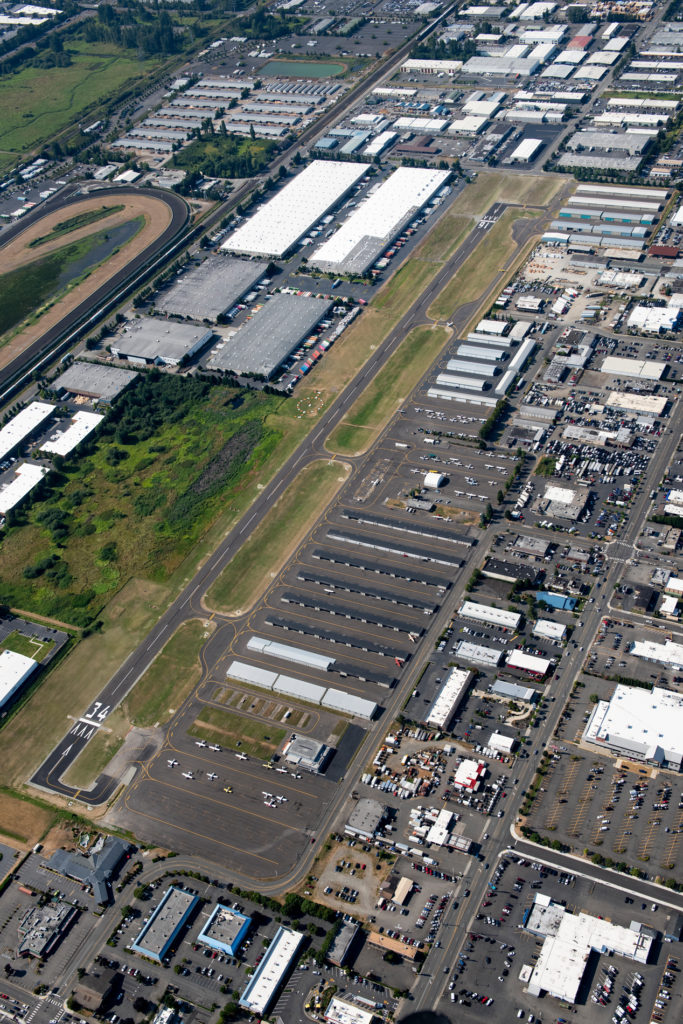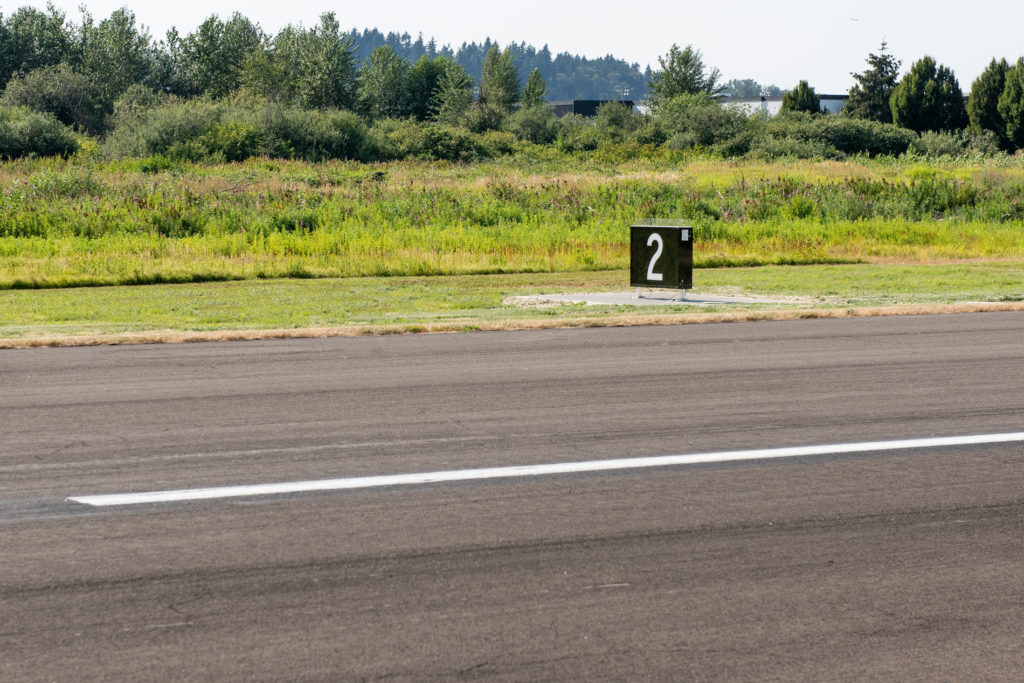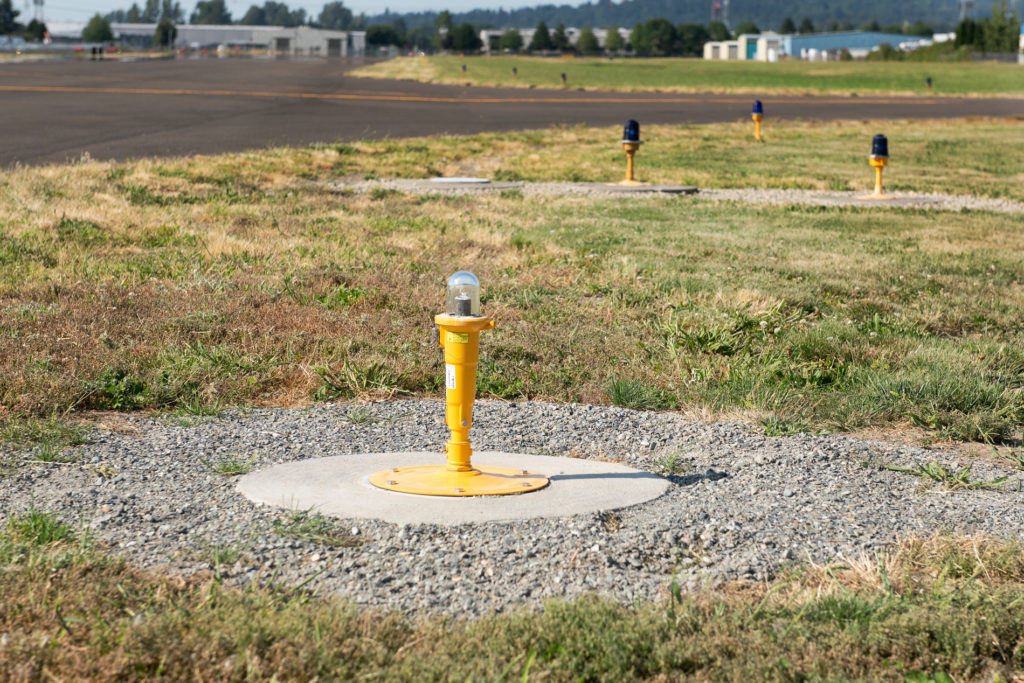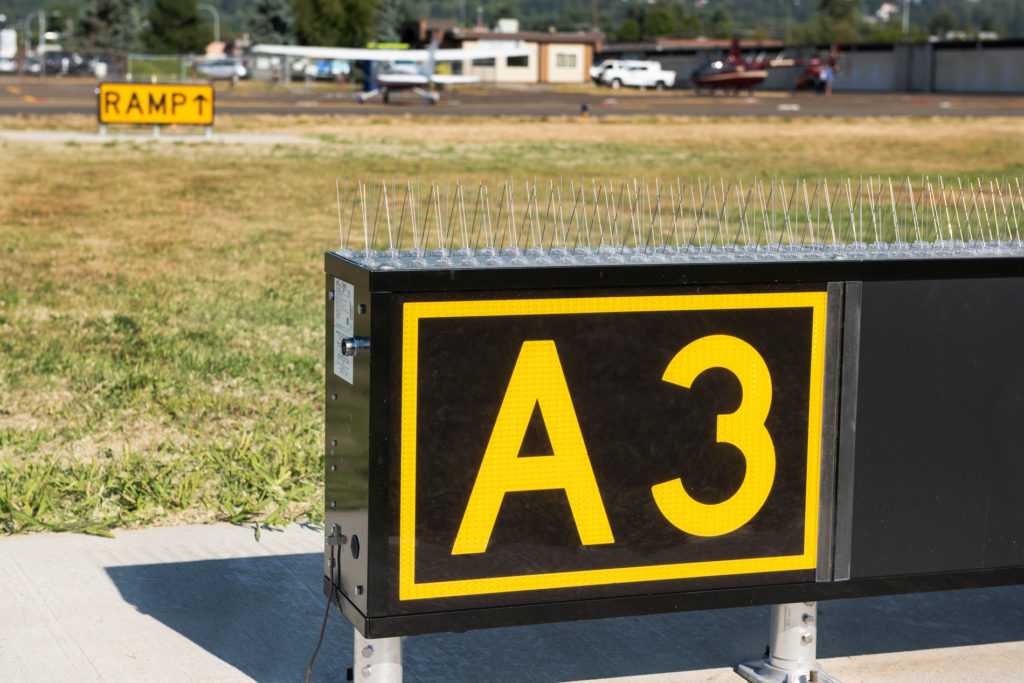In 2012, Century West Engineering Corporation (Century West) began its relationship with the City of Auburn (City) when we were selected to complete an Airport Master Plan (AMP) for the Auburn Municipal Airport (Airport). The purpose of the AMP was to develop an in-depth understanding of the existing conditions and future development needs at the Airport and to chart a path forward for the Airport’s next 20 years.
As a result of the master planning process, Century West identified a need for the Airport to extend the length of its sole runway, Runway 16-34, at both ends, to improve aircraft safety and the ability to accommodate the current and forecast fleet of multi-engine piston aircraft for both takeoff and accelerate stop distance available (ASDA).
Century West completed an Environmental Assessment for the runway extension in 2017; however, the Federal Aviation Administration (FAA) required additional documentation to support the runway extension. Through an additional planning exercise, the Century West team was able to demonstrate the need for the runway extension that allowed the FAA to approve the project and begin design. Century West reviewed pilot operating handbooks for small, multi-engine piston aircraft based at the Airport to determine the ASDA needs. Furthermore, the team reviewed the ASDA requirements in both warm dry and warm wet months to assess worst case scenarios for runway length needs.
“They know the landscape and have good relationships with WSDOT and FAA,” says Auburn Airport Manager, Tim Mensonides, C.M. about Century West’s ability to work through these project challenges.
Due to uncertainty with the FAA grant award timeline and contractor availability, the City and Century West determined it was best to construct the Runway Extension project in Spring 2020. This would allow the FAA to issue the grant for the project in Fall 2019, allow the City to execute the contract with the low-bid contractor—Pivetta Brothers Construction Inc.—and ensure all engineering submittals would be reviewed and approved over the winter. This construction timeline also provided the contractor with sufficient time to procure long lead-time items required for construction. Bids for the project were opened in early August 2019, and the FAA grant was subsequently issued at the end of September.
Construction broke ground in April of 2020, and careful consideration was taken to phase the project in a way to reduce impacts to Airport users. Work on the 200-foot extension of Runway 16 was completed first, and then work shifted to the 241-foot extension of Runway 34. Both areas of work used temporarily displaced thresholds to allow the runway to remain open while providing a clear safety zone for construction activities.
Additional upgrades to the airfield included significant electrical improvements. Concurrent with the runway extension work, the contractor was allowed night runway closures to replace the Runway 16-34 Medium Intensity Runway Light (MIRL) system with energy-saving LED bulbs. Replacement of the various lighting systems were performed in the evenings to reduce impacts to businesses on the Airport, allowing the runway to be reopened each morning for use. The contractor completed the MIRL work ahead of schedule, reducing the number of runway closures required. Both the MIRL and Runway 34 Runway End Identifier Light (REIL) systems were upgraded to accommodate the new length of the runway as well as to replace lights that had exceeded their design life. All of the Airport’s guidance signs were replaced due to deteriorating equipment, and the Airport taxiways were renamed to meet standard FAA naming convention (A1, A2, A3, A4, and A5).
The Airport’s location, situated in a valley adjacent to the Puget Sound, presented significant stormwater challenges as the design team worked through the project. Except for the ultimate runway extension, the Airport is completely built out except for an area west of the runway that is prone to sensitive environmental impacts. Open water, netted stormwater detention ponds exist near the runway on both the north and south runway extension areas. The City has a long-term plan in place to reconfigure existing above-ground stormwater detention ponds that are present near the runway.
Stormwater detention ponds introduce wildlife hazard concerns within the runway environment, and the Airport was extremely interested in removing the ponds as a part of the project. FAA pushed back on the proposal due to a potential increase in cost. However, the Century West team was able to convince the FAA to fund the preferred stormwater alternative, which included installing two underground stormwater detention facilities: one for each runway extension area. The underground detention facilities were instrumental in adhering to strict stormwater requirements while not creating a wildlife attractant hazard.

Because the project was extended at both ends, the runway centerline and numerals needed to be restriped. Additionally, the existing striping was placed on a slurry seal material that had reached the end of its design life. Century West made the case to the FAA to remove the existing pavement markings, apply a new seal coat, and restripe the runway centerline to meet standards. The FAA agreed to fund the additional work as a part of the project.
Completed on time and within available funds, the Runway 16-34 extension project was an enormous success and now provides pilots additional runway length for added safety.
Tim Mensonides had this to say at the end of the project, “Century West has demonstrated that I can trust them enough to turn over a project, and I can rest easy knowing they will deliver quality results.”











